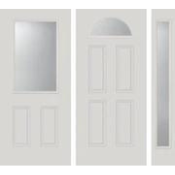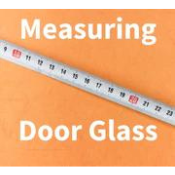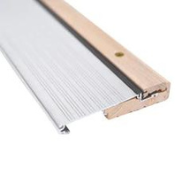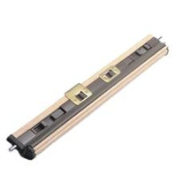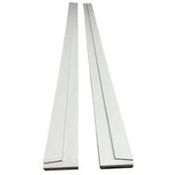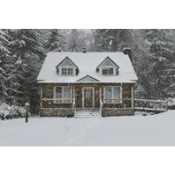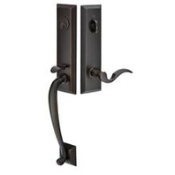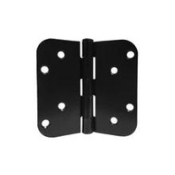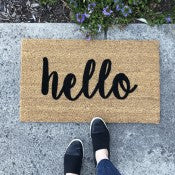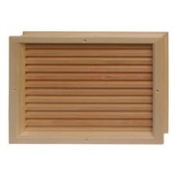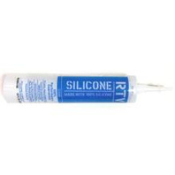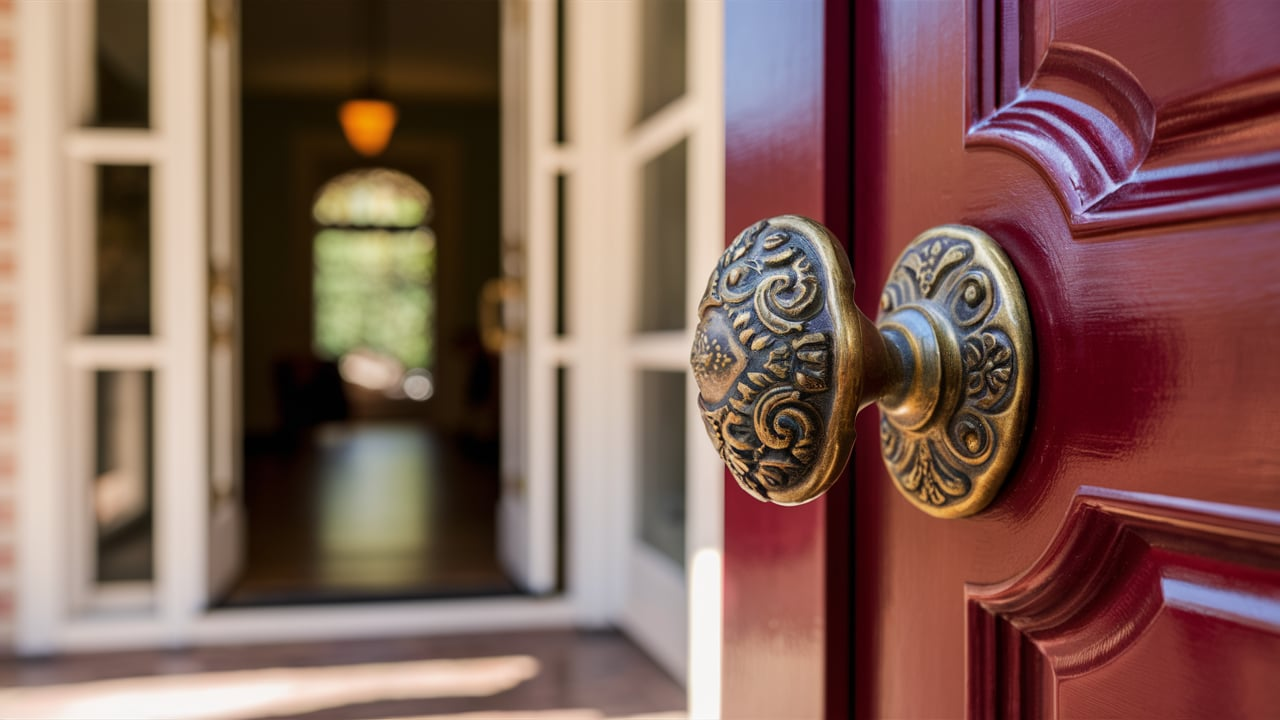
The front doors for homes are more than just an entryway; they’re the first impression of your home. Choosing the right hardware and smart locks for your front doors for homes is crucial for enhancing both security and aesthetics. This comprehensive guide will walk you through various types of door hardware, how to balance security with style, smart lock options, and essential tips for installation and maintenance.
Key Takeaways
- Understand the different types of front door hardware for homes, including knobs, handles, locks, and hinges to make an informed choice.
- Learn how to balance security and aesthetics by choosing the right material, and finish, and integrating hardware with your door design.
- Explore various smart lock options and features such as keyless entry, remote access, and smart home integration.
- Get tips on whether to opt for DIY or professional installation and how to maintain your hardware for front doors for homes.
- Discover troubleshooting tips for common issues to ensure your front door hardware and smart locks function smoothly.
Types of Door Hardware: Knobs, Handles, Locks, Hinges
When selecting hardware for front doors for homes, it's essential to understand the various types available. Each type serves a unique purpose and can significantly impact both the functionality and aesthetics of your entryway.
-
Door Knobs: Traditional and Modern Styles
Door knobs are a classic choice for front doors for homes. They come in both traditional and modern styles, allowing homeowners to choose based on their design preferences. Traditional knobs often feature a rounded handle, while modern styles may include sleek, minimalist designs. Pairing a door knob with a deadbolt can enhance security.
-
Door Handles: Lever and Pull Options
Stylish door handles, such as levers and pulls, offer a more contemporary look. Lever handles are easy to operate, making them a popular choice for homes with children or elderly residents. Pull handles, on the other hand, provide a bold statement and are often used in more modern or industrial designs.
-
Locks and Hinges: Security and Functionality

Locks and hinges are crucial components of front door hardware. There are various types of locks, including cylindrical lever locks, mortise locks, and smart locks, each offering different levels of security. Hinges, while often overlooked, play a vital role in the door's functionality and longevity. Regular door hardware maintenance, such as lubricating hinges and checking lock mechanisms, ensures that your front door remains secure and functional.
Balancing Security and Aesthetics
-
Choosing the Right Material and Finish
Selecting the appropriate material and finish for your front door hardware is crucial. Each material offers a unique blend of durability, maintenance requirements, security features, and aesthetic appeal. For instance, stainless steel is known for its strength and resistance to corrosion, while brass provides a classic look with excellent durability. Consider the climate and exposure to elements when choosing materials to ensure longevity and performance.
-
Integrating Hardware with Door Design
The design of your door hardware should complement the overall style of your entryway. Whether you prefer a modern, minimalist look or a more traditional design, there are numerous options available. Pay attention to the details, such as the shape and size of the knobs, handles, and locks, to ensure they harmonize with your door's design. This integration not only enhances the visual appeal but also ensures that the hardware functions seamlessly with the door.
-
Enhancing Curb Appeal with Stylish Hardware
Stylish hardware can significantly boost your home's curb appeal. Opt for finishes and designs that reflect your taste and the architectural style of your home. Matte black finishes, for example, offer a contemporary look, while polished brass can add a touch of elegance. Don't be afraid to mix and match different styles and finishes to create a unique and inviting entryway. Remember, the front door is often the first impression visitors have of your home, so make it count.
Smart Lock Options and Features
-
Keyless Entry Systems

Smart front doors for homes locks offer a variety of keyless entry systems, including Bluetooth, Wi-Fi, and keypad options. These systems allow you to unlock your door using a smartphone app, a code, or even biometric data like fingerprint recognition. This not only enhances convenience but also ensures secure door locks for your home.
-
Remote Access and Monitoring
One of the standout features of smart door locks is the ability to control and monitor your lock remotely. Whether you're at work or on vacation, you can check the status of your lock and even lock or unlock your door from anywhere. This feature is particularly useful for granting temporary access to guests or service providers.
-
Integration with Smart Home Systems
Smart door locks can seamlessly integrate with your existing smart home systems. This means you can sync your lock with other devices like security cameras, alarms, and even voice assistants. Such integration not only boosts security but also adds a layer of convenience, making it easier to manage your home security from a single platform.
Installation Tips and Maintenance
-
DIY vs Professional Installation
When it comes to installing front door hardware and smart locks, you have two main options: doing it yourself or hiring a professional. DIY installation can be cost-effective and satisfying, especially if you enjoy hands-on projects. However, it requires a certain level of skill and the right tools. On the other hand, professional installation ensures that the job is done correctly by door experts efficiently, reducing the risk of improper setup that could compromise security.
-
Routine Maintenance and Cleaning
To keep your door hardware and smart locks in top condition, regular maintenance is key. Here are some essential tips:
- Regular Cleaning: Dust and debris can accumulate in the keyway or lock mechanism, affecting functionality. Use a brush to clean these areas regularly, avoiding harsh cleaning products that could damage internal components.
- Lubrication: Apply a silicone-based or graphite lubricant to the keyway and moving parts to enhance performance. Always follow the manufacturer's instructions for the type of lubricant to use.
- Software Updates: For electronic locks, keep the software up to date to ensure optimal performance and security.
- Professional Maintenance: Schedule regular professional check-ups to identify and address potential issues before they become major problems.
-
Troubleshooting Common Issues
Even with regular maintenance, you may encounter some common issues with your front doors for homes. Here are a few troubleshooting tips:
- Stiff Lock Mechanism: If the lock is hard to turn, it might need lubrication. Apply a suitable lubricant and try again.
- Key Won't Turn: This could be due to debris in the keyway. Clean it out with a brush and try again.
- Electronic Lock Malfunctions: Ensure the batteries are charged and the software is up to date. If problems persist, consult the manufacturer's troubleshooting guide or seek professional help.
By following these installation and maintenance tips, you can ensure that your front door hardware and smart locks remain functional and secure for years to come. For seamless installation and long-lasting maintenance of your doors, visit us at Peasedoors for expert tips and professional advice. Our comprehensive guides and high-quality products ensure your doors remain in top condition. Don't miss out on our exclusive offers and detailed tutorials!
Conclusion
Enhancing your entryway with the right hardware for front doors for homes and smart locks is a blend of functionality, security, and aesthetics. From selecting the perfect knobs, handles, and hinges to integrating advanced smart lock systems, each choice contributes to the overall appeal and safety of your home. By balancing these elements and following proper installation and maintenance tips, you can create an inviting and secure entryway that reflects your style. Embrace the future of home security and design by making informed decisions that elevate both the look and functionality of your front door.
Frequently Asked Questions
1. What are the main types of front door hardware?
The main types of hardware for front doors for homes include door knobs, door handles, locks, and hinges. Each type comes in various styles and finishes to match your home's aesthetic and security needs.
Choosing the right material and finish involves considering the overall design of your home, the climate, and the level of maintenance you're willing to commit to. Common materials include brass, stainless steel, and bronze, each offering different levels of durability and aesthetic appeal.
3. What are the benefits of using smart locks over traditional locks?
Smart locks offer several benefits over traditional locks, including keyless entry, remote access, and the ability to integrate with other smart home systems. They provide enhanced security features and greater convenience.
4. Can I install the front door hardware myself, or should I hire a professional?
Whether you can install hardware for front doors for homes yourself depends on your skill level and the complexity of the hardware. Simple installations like door knobs and handles can often be done DIY, but more complex systems like smart locks may require professional installation to ensure they function correctly.
5. How do I maintain and clean my front door hardware?
Routine maintenance and cleaning involve regularly wiping down the hardware with a damp cloth and mild detergent. For metal hardware, you may need to apply a protective coating to prevent tarnishing or rust. Always follow the manufacturer's care instructions.
6. What should I do if my smart lock isn't working properly?
If your smart lock isn't working properly, first check the batteries and replace them if necessary. Ensure that the lock's firmware is up to date and that it is properly connected to your Wi-Fi network. If issues persist, consult the manufacturer's troubleshooting guide or contact customer support.


